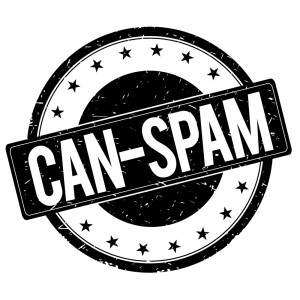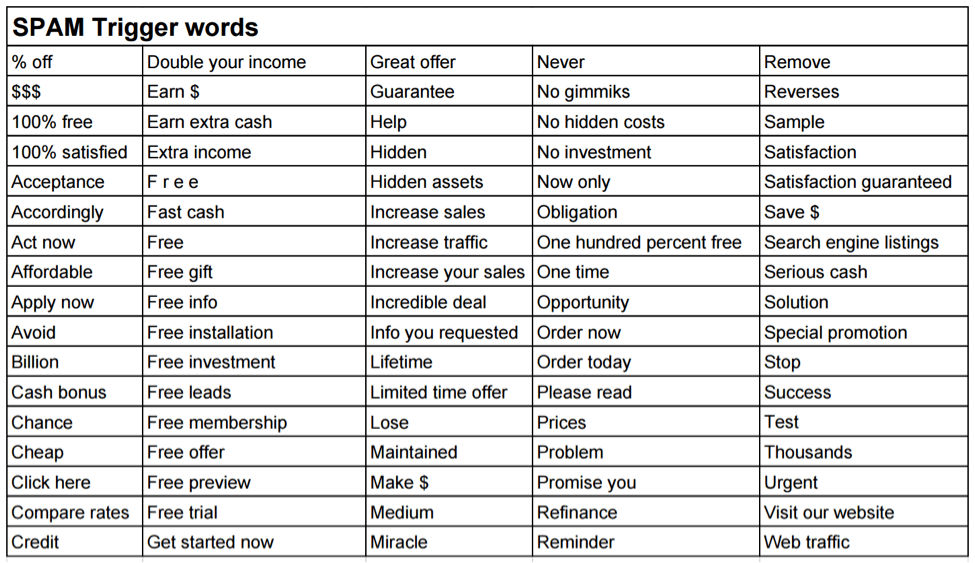
“Just 79 percent of legitimate commercial emails worldwide reach their intended target, according to new research from data solutions provider Return Path. The 2016 Deliverability Benchmark Report shows that the remainder—a full 21 percent—are diverted to spam folders or blocked entirely. These global numbers remain unchanged from the company’s 2015 benchmark report.” – Return Path
We can probably all agree that we want 100% of our legitimate, carefully-crafted emails to reach our subscribers’ primary inbox folder. After all, getting into that folder is only the first step. Consequently, competing for their attention and reaction gets even harder: the average email open rate for B2B emails is 23.84% and 21.84% for B2C. But improving email open rates is a conversation for a different day. For now, let’s talk about how you can improve your email marketing deliverability.
There are 2 ways that your emails can end up in the dreaded spam folder: they can be sent there by the email recipient or through email filters set by the email recipient’s mail provider (i.e. Microsoft Outlook, Gmail). Email recipients want to receive communications that they value, from senders that they trust. Mail providers want to keep email recipients satisfied by predicting their needs and filtering out all the junk emails for them. The following are 12 things you can do to improve your email marketing deliverability rates by keeping the needs of both email recipients and email filters in mind.
-
Don’t send unsolicited emails
The practice of acquiring email lists and sending emails to people who didn’t opt-in is just really bad practice. Most likely, upset users will mark you as spam. Or, mail filters will block your emails from reaching the recipient’s inbox. Either way, you don’t want to be marked as spam. That lowers your sender reputation and alerts spam filters to block your future communications. Rather, you should focus on building your email lists by providing valuable content and having users opt-in to receive your communications.
-
Never use deceptive header information
Make sure that you accurately identify yourself in the “From,” “To,” Reply-To,” and routing information in all your email communications. This – and the next 3 requirements – follows the CAN-SPAM Act, “a law that sets the rules for commercial email, establishes requirements for commercial messages, gives recipients the right to have you stop emailing them, and spells out tough penalties for violations.”
-
Always include your business address
This can be your current business address, a U.S. Postal Service PO box, or a registered private mailbox.
-
Always provide an unsubscribe link
You should make it easy for your subscribers to unsubscribe from your email lists. If users can’t quickly find ways to opt-out, they may mark you as spam which is a far worse outcome. Mail providers will also notice when users are not engaging with your emails and adjust. They may start sending your emails straight to junk folders, even for new subscribers who haven’t yet engaged with you.
-
If a user asks to be unsubscribed, honor their request immediately
You can offer subscribers a chance to down-subscribe or give feedback on their reasons for unsubscribing. But be respectful of whichever choice they make. If you continue to send emails after they have opted-out, they, or their email providers, may mark you as spam.
-
Authenticate your email
Your business might not be sending spam. But spammers can forge emails, making it seem like the spam that they send out is coming from your domain/source. To avoid getting blacklisted for emails your business never sent out directly, you should authenticate your email. Most email service providers do that for you, but you can learn more about email authentication here.
-
Avoid spam trigger words in your email subject lines
The list (above) from Yesware contains words that can set off email spam filters. If you need to use those words, use them in the content of your email. Try not to use them often and try not to use them in combination with other trigger words. Also, don’t use ALL CAPS and exclamation points and avoid spelling mistakes in your emails!!!
-
Make your content engaging and friendly
Use merge tags to personalize your emails. For example, include your subscribers’ names in the content of your emails. Make your content interactive by encouraging users to take certain actions (like visiting your website or responding to your survey). Email filters are more likely to tag you as a primary sender if your users are engaging with your emails.
-
Monitor your email campaigns’ engagement rates
What are your email open rates, click rates, and reply rates? How much time do users spend viewing your emails? Keep track of those metrics and if they are dipping, consider improving your communications and/or cleaning up your email list.
-
Keep your email marketing list clean
After monitoring your email campaigns, take note of users who are not engaging. As mentioned above, if users are not engaging with your content, you should unsubscribe them or place them in a re-engagement campaign.
-
Make sure your email is mobile-friendly
By definition, spam is unsolicited, irrelevant, bulk email. But it’s not only up to spam filters to mark emails as spam. We also have to consider email recipients and the factors that can lead them to view and mark your emails as spam.
According to a survey by Litmus and Fluent, 43% of consumers have marked promotional emails as spam because the emails weren’t mobile-friendly. Make sure that your emails, website, and landing pages are all mobile-friendly.
-
Be aware of customer interactions with other sides of your business
If a customer has just had a bad experience with a different side of your business (i.e. bad call with customer service), consider temporarily suppressing your commercial emails from them. That same survey by Litmus and Fluent found that 45% of consumers have hit the report spam button after a bad experience with a company. Consumers don’t view your business as siloed departments, and neither should you.
The factors which influence email deliverability are constantly changing, but by following the rules set by the CAN-SPAM Act, staying in tune with your subscribers’ needs, and creating great content, you can reduce the chances of ending up in the wrong email folders.









